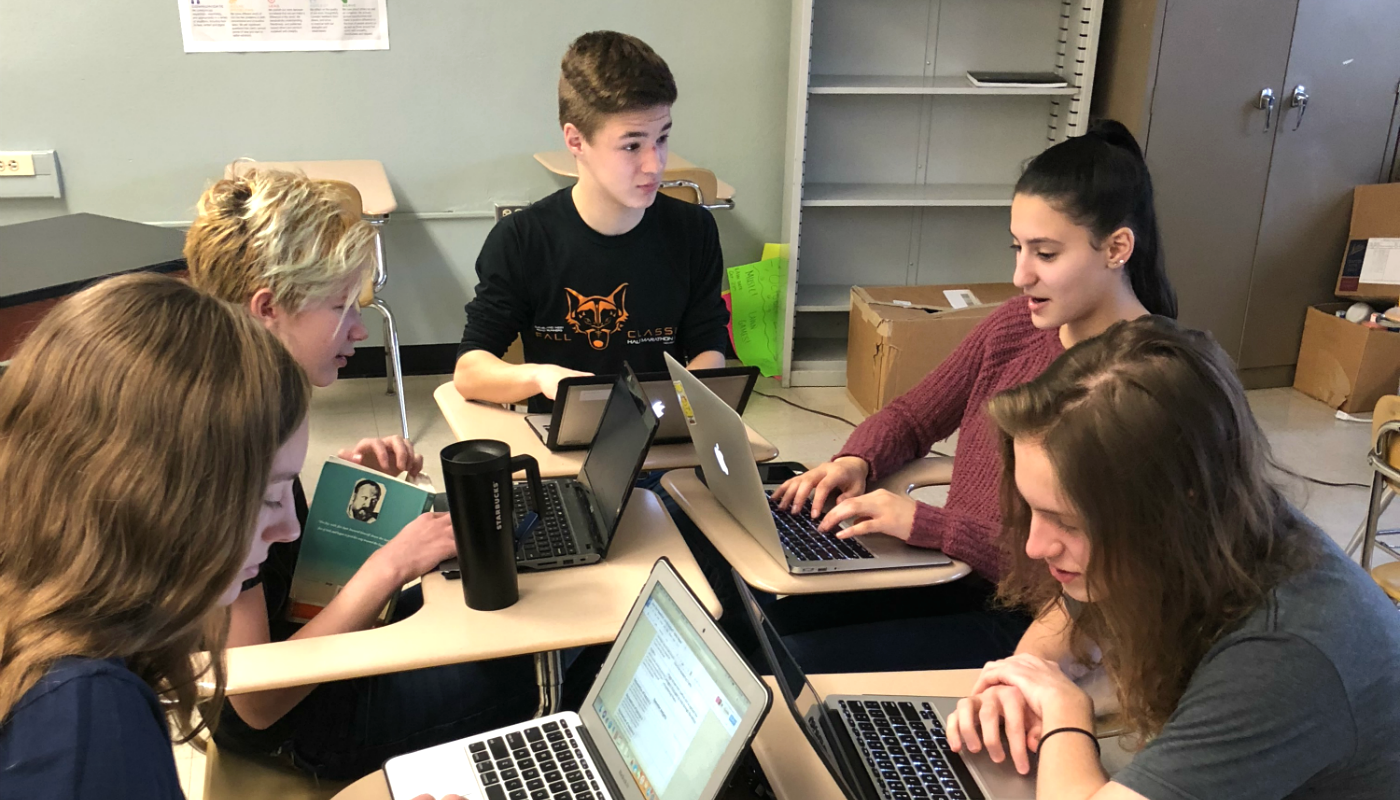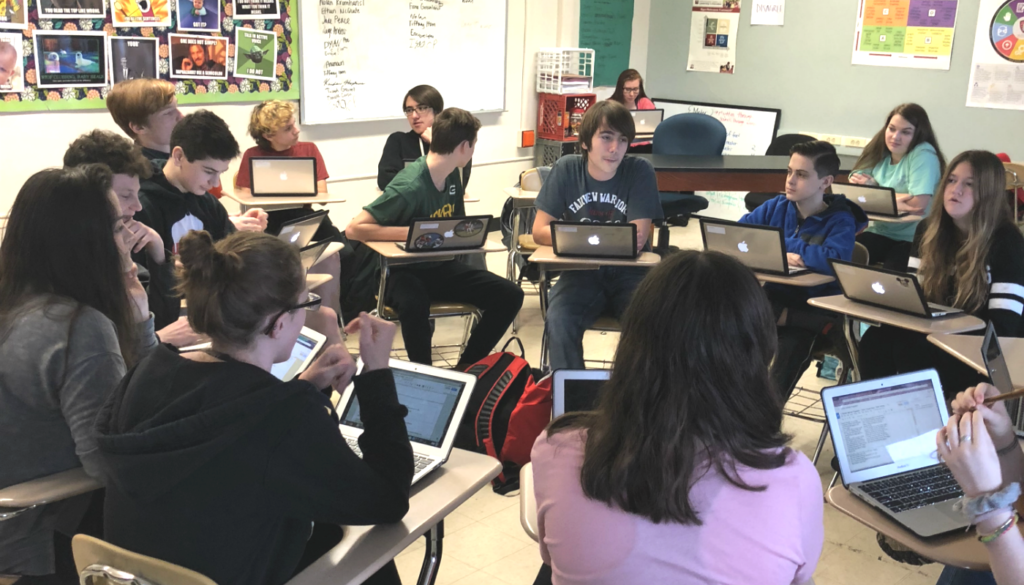
Walk into my 9th grade English classroom at Fairview High School in Fairview Park, Ohio, and it may not look like the typical classroom depicted in films. Instead of students sitting in rows, they cluster in small groups of desks. Instead of one voice — mine — there are many student voices deep in collaboration.
I’m not in the front of the room as much as I was my first year teaching. Instead, I make an effort to be present everywhere in my classroom. If I’m not in a one-on-one meeting with a student, I’m facilitating a small group workshop or walking around the class, keeping students on track.
Why the change? In the 2016-17 school year, my school joined the Summit Learning Program, an approach to personalized teaching and learning. Yet the biggest change in my classroom wasn’t just about the physical arrangement of desks and chairs. No, it was the increased engagement among my freshman students. For the first time, my students initiated conversations about grades and assessments and how they could do better.
“I’m wrapping up my second year as a Summit Learning teacher and can confidently say that the change has been more than worth it. In fact, it’s necessary.”

Adapting to a Personalized Learning Environment
When joining Summit, I was most excited about the ability to tailor my instruction to reach every student. My first year with Summit Learning, this differentiation did not come naturally. At the beginning of the year, I became frustrated that I was not “teaching to the edges” enough. I focused much of my energy on providing support to those students who needed it and soon realized the high-achieving students who grasped the Platform immediately also needed support to move forward or to be challenged with additional assignments.”
However, what I initially had seen as a challenge was actually me being called to action to become a more effective teacher. By applying the versatility of the Summit Learning Platform, I could create differentiated pathways for accelerated students, so they were never stuck waiting to move forward.
With the Platform, I can see my students’ progress in real-time and use this insight to differentiate assignments catering to students’ strengths and abilities. Often I separate my classroom into different groups — students on track but needing additional support, students on track and not requiring support, and students accelerating ahead. From there, I can easily assign work classified as “mild, medium, or spicy” based on a student’s individual skill set.
This process has enhanced my understanding of how I can effectively implement and support personalized learning in my own classroom.
The Power of Mentoring in Motivating Students
Combining the power of the Platform with weekly 1:1 Mentoring sessions is how I can really have an impact as a teacher. I had one student in particular who would always do the bare minimum of work that was required to pass, and then move on. Soon enough, she started falling behind. I think her biggest burden was that she didn’t think she was capable.
During weekly mentor check-ins, I was able to create a plan of action in the Platform with this student and her parents. The plan was more detailed and personalized than anything I could have done alone at the front of the classroom.
The plan included very specific goals — which areas she needed to finish each week to stay on track. When she realized that by separating focus areas and projects into short-term goals she would be successful, she became so motivated to get things done. Instead of being distracted, she would proactively get to work. She was more positive about her accomplishments. By the end of the year, her 8th-grade school counselor said she was unrecognizable.
This isn’t an isolated example. Initially, it took some time for students to get used to the flexibility and ownership they had over their own learning with Summit. But those growing pains translated to impressive academic gains.
Advice for First Year Summit Learning Teachers
In the world today, we have become accustomed to results and answers coming quickly, but in the sector of education, change is a process that needs time and commitment, which I know fellow teachers are well aware of.
Because of this, many educators do not allot enough time for programs or initiatives to take shape and instead abandon them. The Summit Learning Program is worth the time, effort, and energy because I have witnessed first-hand educational breakthroughs that myself and my colleagues did not initially believe were possible.
While it can be at times very challenging or frustrating, the programs that require serious groundwork and motivation on behalf of the educators will yield the best results if time and patience are appropriately given.

